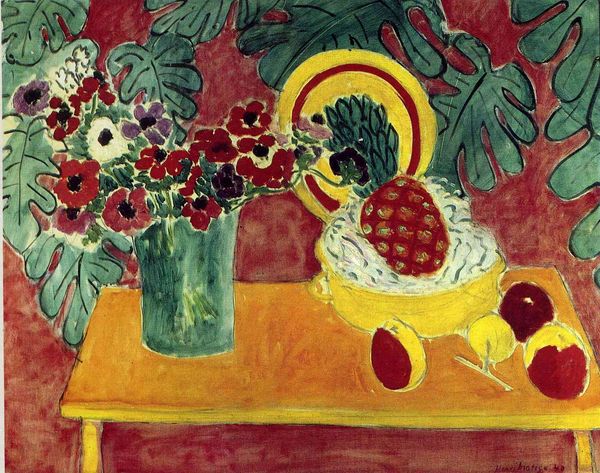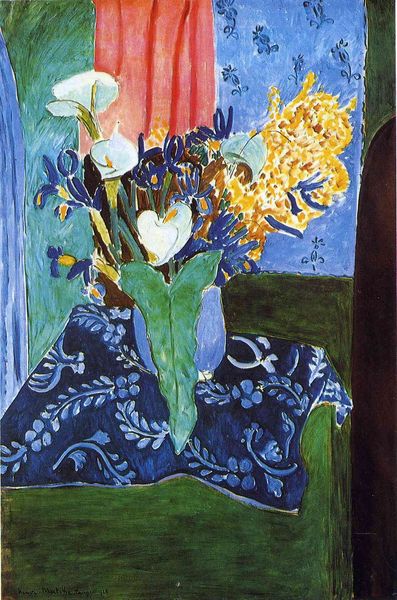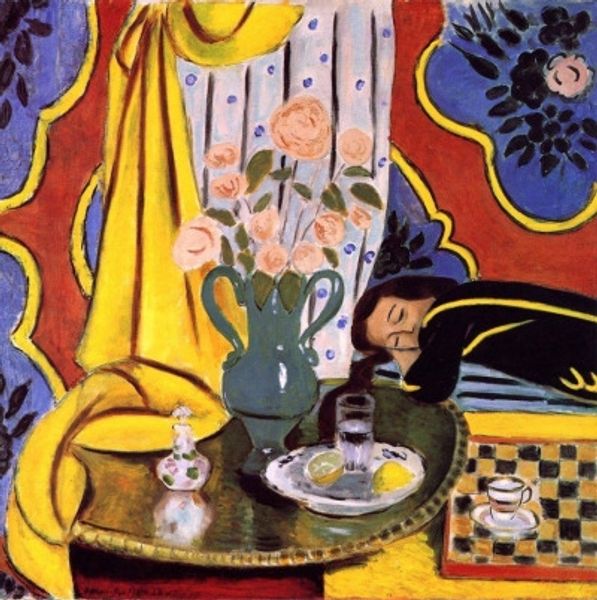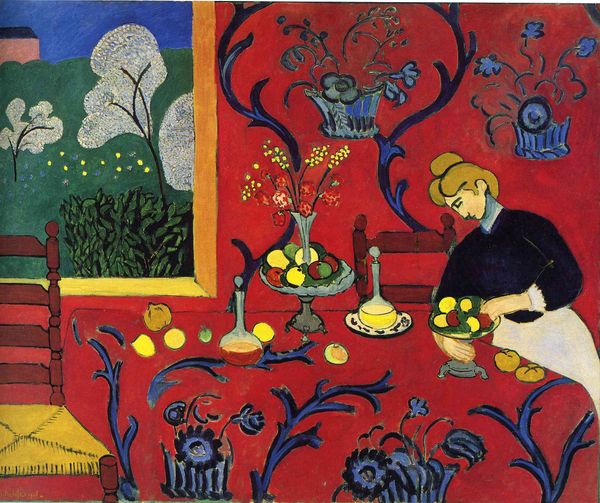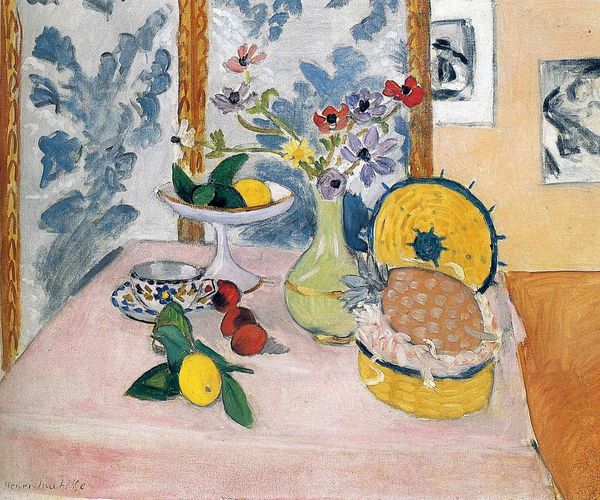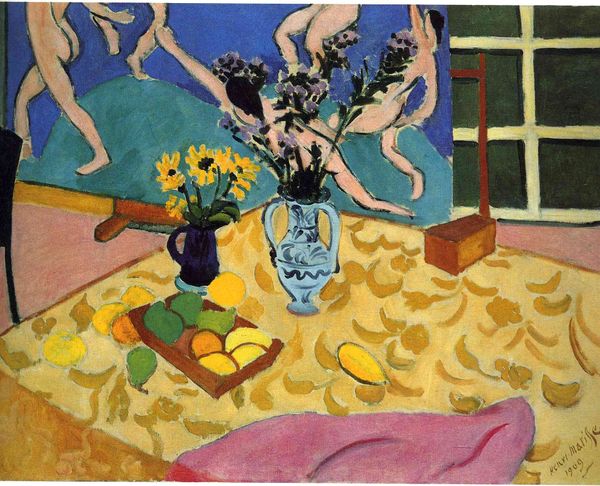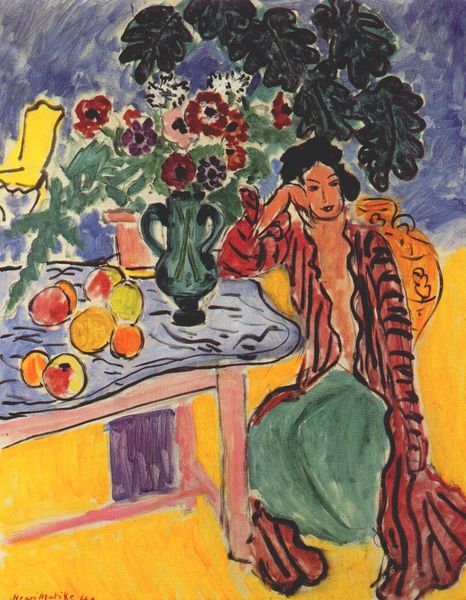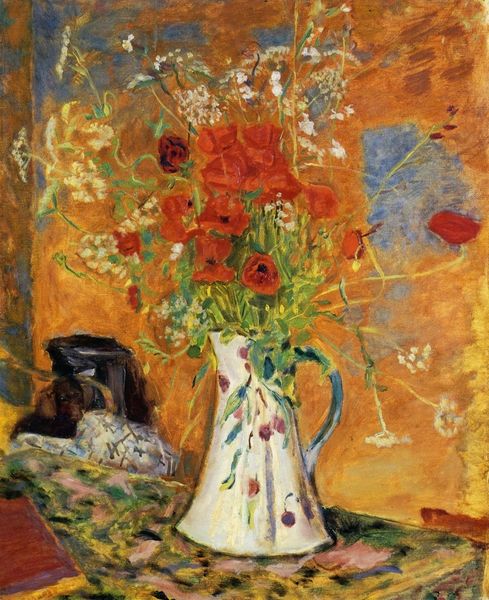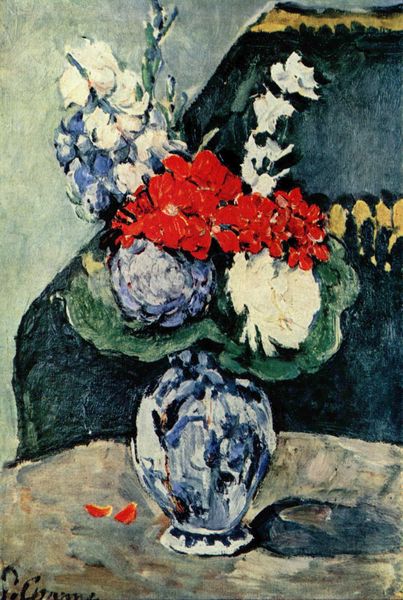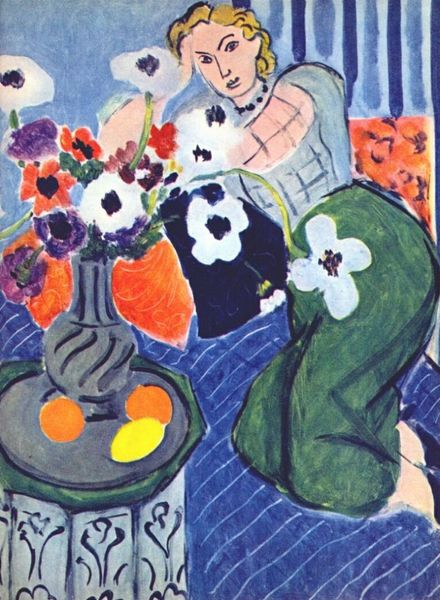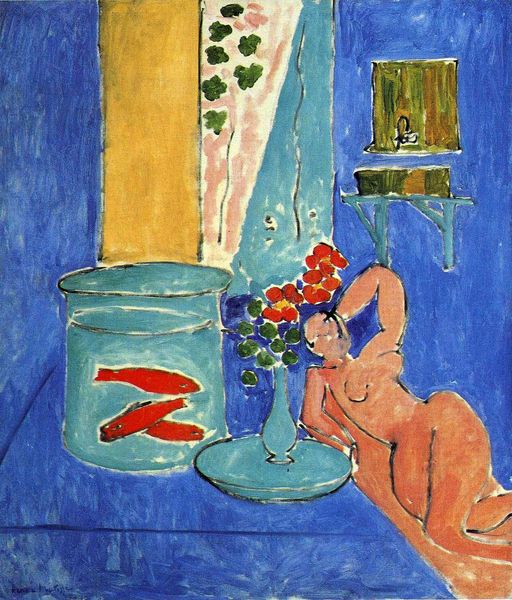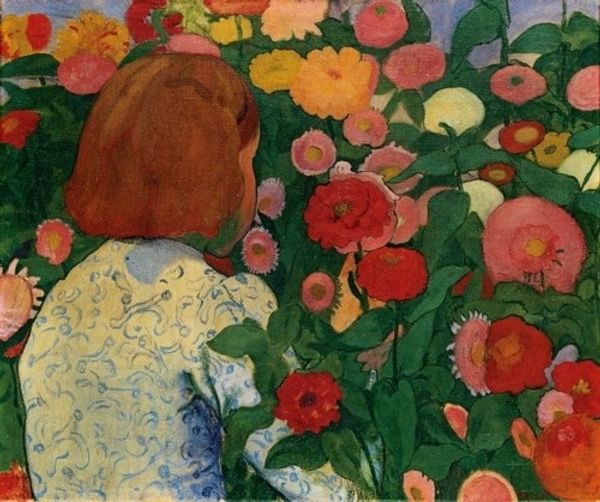
Dimensions: 115.9 x 89 cm
Copyright: Henri Matisse,Fair Use
Editor: "Plum Blossoms, Green Background," painted in 1948 by Henri Matisse. It's oil on canvas, currently in a private collection. It feels so vibrant, almost aggressively cheerful with that striking red table! The woman’s face is completely devoid of features. How should we interpret this painting? Curator: Consider the blossoms themselves, their transient beauty a common symbol of renewal, especially relevant so soon after the Second World War. Notice, too, the lemons; yellow is often associated with joy and wisdom but sometimes sickness and jealousy. Is Matisse reflecting on life's dualities? Editor: So the painting is maybe speaking about the duality of life at this period of history? I was focused on the bold Fauvist colours and the pattern in the background, which now seems almost like a forest pressing in. Curator: Indeed. Ask yourself, how does the faceless woman figure within this arrangement? Is she representative, every woman who has seen those times? Matisse reduces her to a composition of colours, which deflects any specific narrative. It universalizes. Editor: That’s really insightful. The lack of a face now feels intentional, even powerful. Are we supposed to place ourselves, as viewers, into the seat she occupies? Curator: Possibly. And look again at those ‘naive’ zigzags. This motif appears repeatedly in different Matisse works, always representing growth, evolution. Editor: I see what you mean. The whole scene, then, despite the unsettling aspects, conveys a powerful message of hope. I originally missed a lot by focusing only on the colours and flattening. Thank you. Curator: Symbolism always rewards closer study. I'm glad this brief analysis was illuminating.
Comments
No comments
Be the first to comment and join the conversation on the ultimate creative platform.
